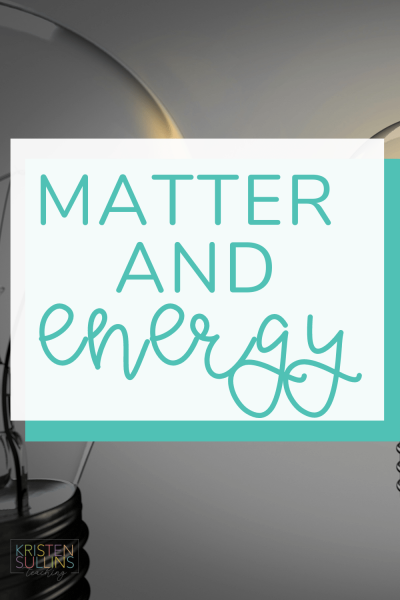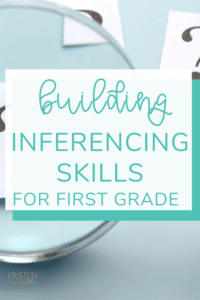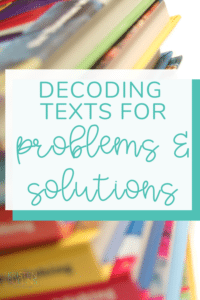Teaching science in first grade can be so fun because topics like matter and energy can provide excitement and natural engagement for students!
But, with that being said, topics like “matter and energy” can be incredibly overwhelming for a teacher.
For instance, here's what first grade students need to know about matter and energy:
- How to classify an object by it's properties (shape, size, color, texture and weight) and the materials from which they are made
- How to predict and identify changes in an object when it is heated or cooled
- How to identify different forms of energy (light, sound and heat)
- How to predict and describe how a magnet can push or pull an object
- Demonstrate and record ways that objects can move (straight line, zig zag, up and down, back and forth, round and round, fast and slow)
Obviously this is too much information to be taught within one unit or one week, so I've broken down how I like to teach my first grade students about matter and energy below!
My main “weekly units” that I use to teach about matter and energy in first grade is:
- Types of Energy (Light, Sound and Heat)
- Force, Motion and Magnets
- States of Matter (Solid, Liquid and Gas)
- Five Senses
- Snowflakes
I like to use a wide range of activities in all of my science lessons to ensure I’m meeting all of the different learning styles in my classroom. Each of the activities is explained in one of the five weekly units below and you can click on the “Read More” button in each section to be taken to a blog post specific to that unit.
But here’s an overview of activities that I use in each of the science units:
- Vocabulary introduction
- Read Alouds and Videos
- Whole Group/Guided Practice Activities
- Independent Activities
- Cut and Paste Worksheets
- Interactive Journals
- Creative and Informational Writing
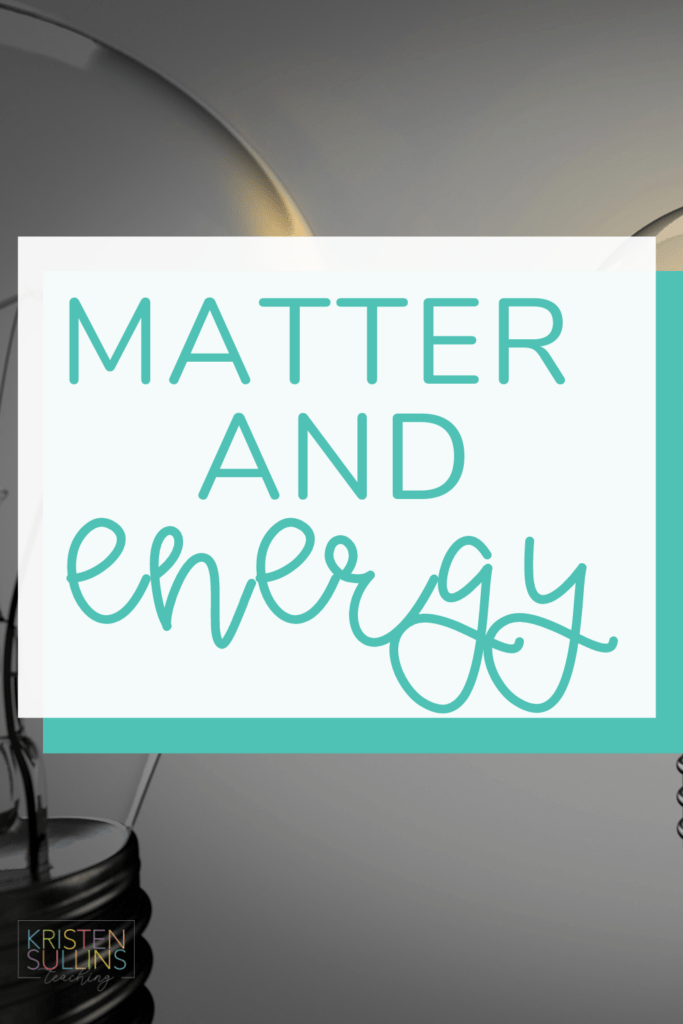
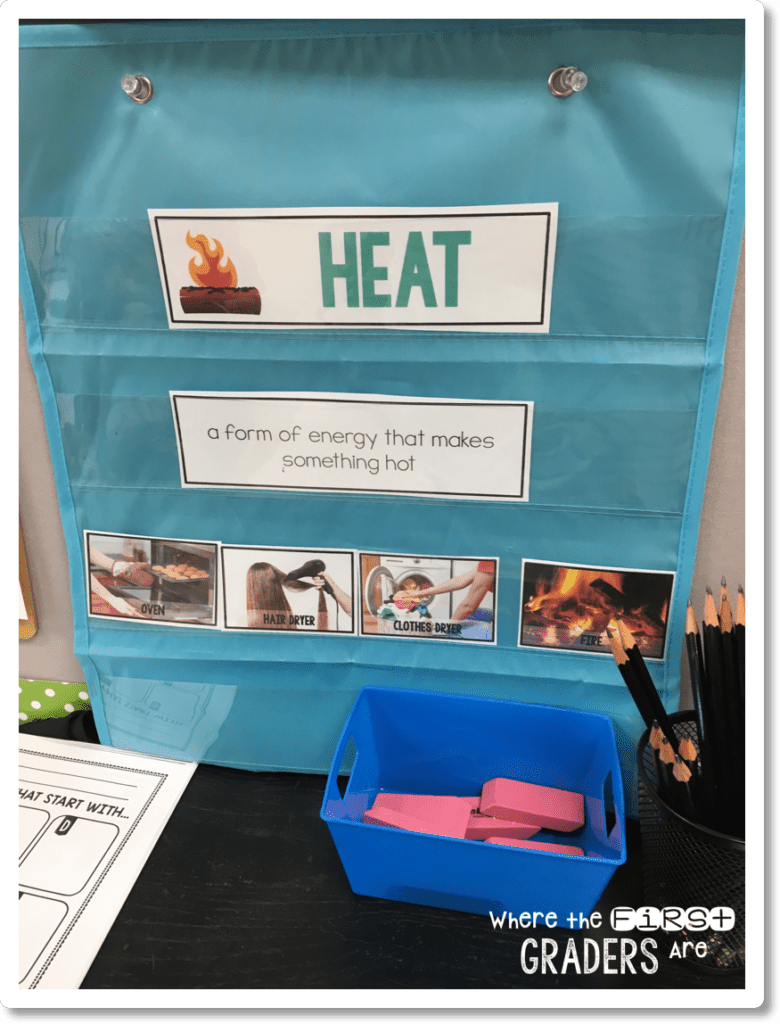
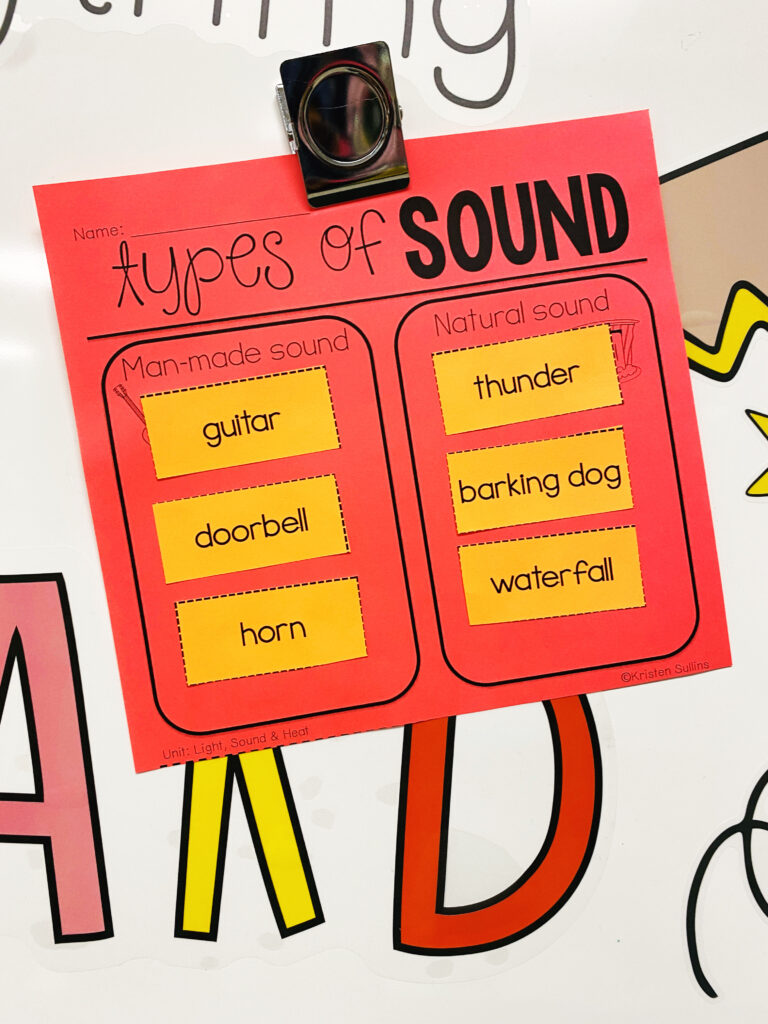
Types of Energy: Light, Heat and Sound
Let's talk about cut and paste activities. These are PERFECT for when students are ready to become a little more independent.
For Types of Energy, I like to have students sort out different types of man-made sound and natural sound. We do the same for man-made light and natural light. This may sound like a simple activity, but you would be surprised how many first grade students have not yet been exposed to the difference in man-made v. natural sources.
You can still complete these together as a class, OR you can have students complete the activities independent FOR… wait for….
EXTRA INTERVENTION time for math and reading!!
What??
YES! I use my last 30 minutes of the day (for social studies or science) to sneak in a little more intervention time.
I get my students going on an independent activity such as a cut and paste, then I pull back a group of 3-4 students for extra reading or math intervention rather than having them complete the social studies activity… because what's really more important?
Force, Motion and Magnets
Okay, “Guided Research” sounds like a super formal term… but what it really means is that these are the activities that we do together as a class and there is typically a right or wrong answer.
This is where I introduce new vocabulary and I am “guiding” students through books or videos to find new information. We are then recording that new information on a simple recording sheet.
These activities are completed at the beginning of the unit when students are just starting to build their knowledge base, so these activities might seem easy, but remember, they are BUILDING their knowledge on the subject.
This unit includes excellent color photograph examples of force, motion and magnets that provide great visuals for first grade students.
I love the “All About Magnets” worksheet that you see on the right because the bottom section allows for so much creativity. My students will start coming up with types of magnets that I hadn't even thought about!
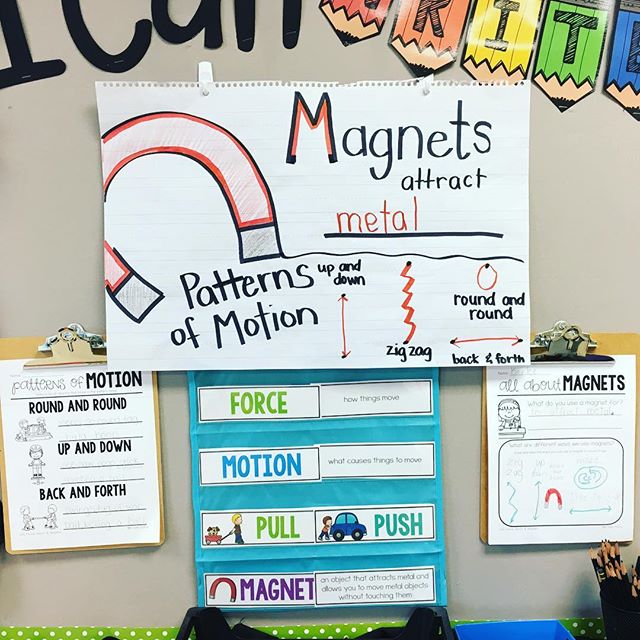
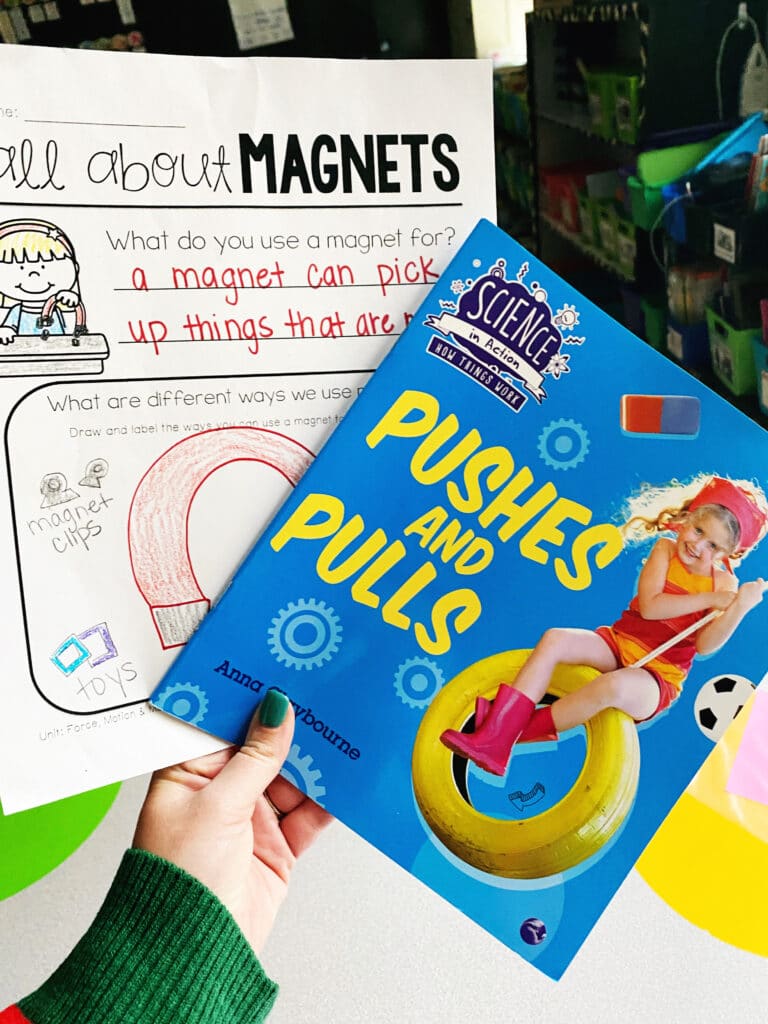
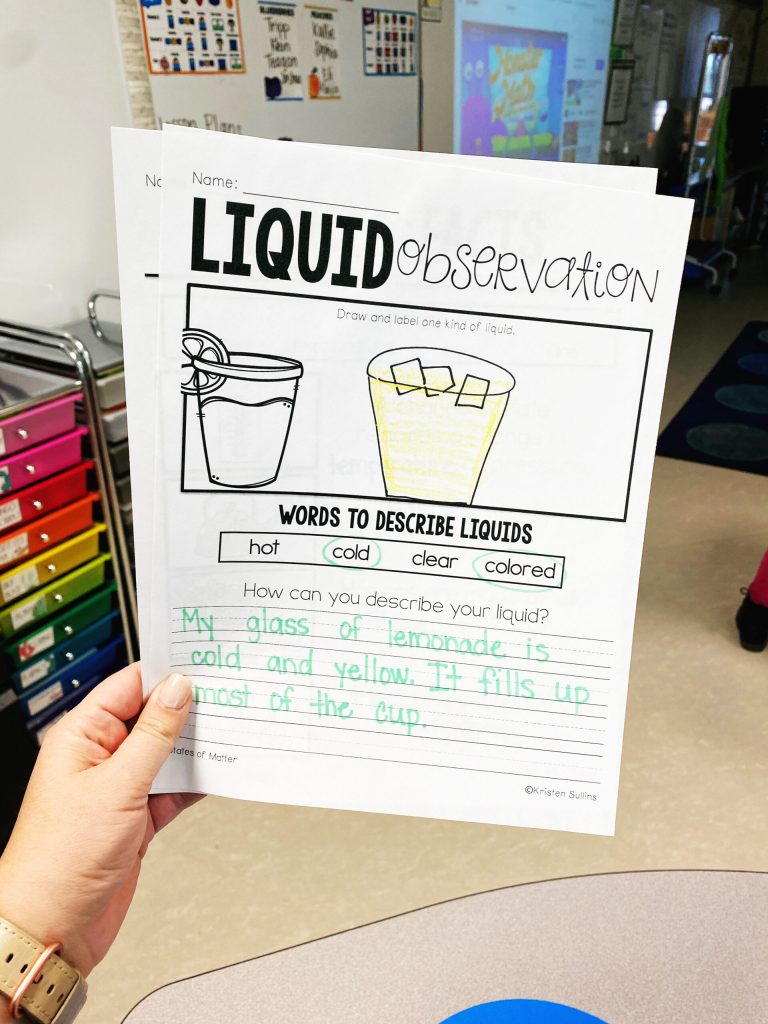
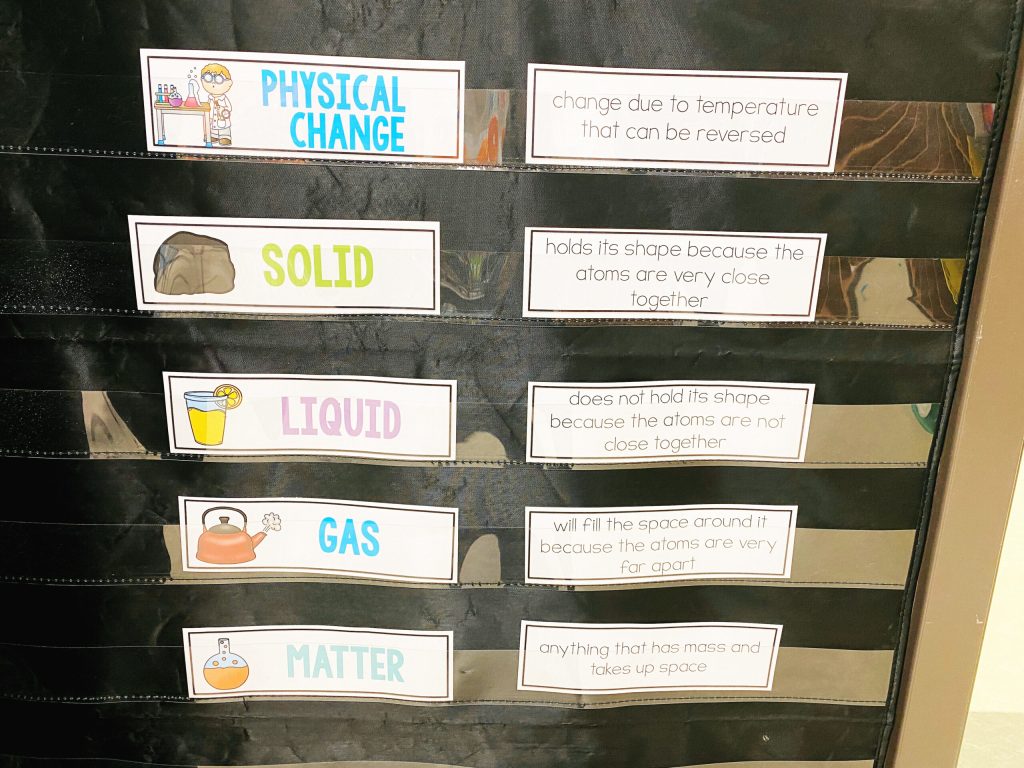
States of Matter: Solid, Liquid and Gas
The main things students need to know about states of matter (solid, liquid and gas) in first grade are:
- What are the properties of a solid?
- What are the properties of a liquid?
- What are the properties of a gas?
- Predict and identify changes in materials caused by heating and cooling.
Observations
I love using open ended prompts like the one you see on the left on the “Liquid Observation”. It's an excellent opportunity for you to model how to use adjectives correctly in a sentence when you are describing an object.
I love the freedom that it gives me as a teacher to lead the discussion where I need it to go, but I also love that it gives students an opportunity to get really creative.
You can easily differentiate this activity by having students draw, label or even write complete sentences.
Five Senses
The main things students need to know in first grade are:
- The five senses help us notice and learn from the world around us. They can also alert us or keep us safe from dangerous situations.
- The five senses help us classify objects by observable properties such as heaver, larger, shape, color and texture.
- The five senses help us identify the three types of energy: light, sound and heat.
Writing about the Five Senses for First Grade
I always love to wrap up my first grade five senses unit with independent writing.
I feel like this is the optimal way for students to show me what they have learned and also improve on their writing skills!
You really have so many different options when it comes to writing. Here are my three go to forms of writing about the five senses:
- Sentence Writing: students write one sentence about each of the five senses.
- Informational Writing: Students write a paragraph about what they have learned about the five senses.
- Sensory Poems: Students use each of the five senses to write a sensory poem/riddle that describes an object.
For students who are pretty independent, I let them work on their own. For students who are struggling a little bit, I write out sentence stems for them to use.
I always like to encourage students to use real life examples in their writing which is SO easy for the five senses because we use them everyday!
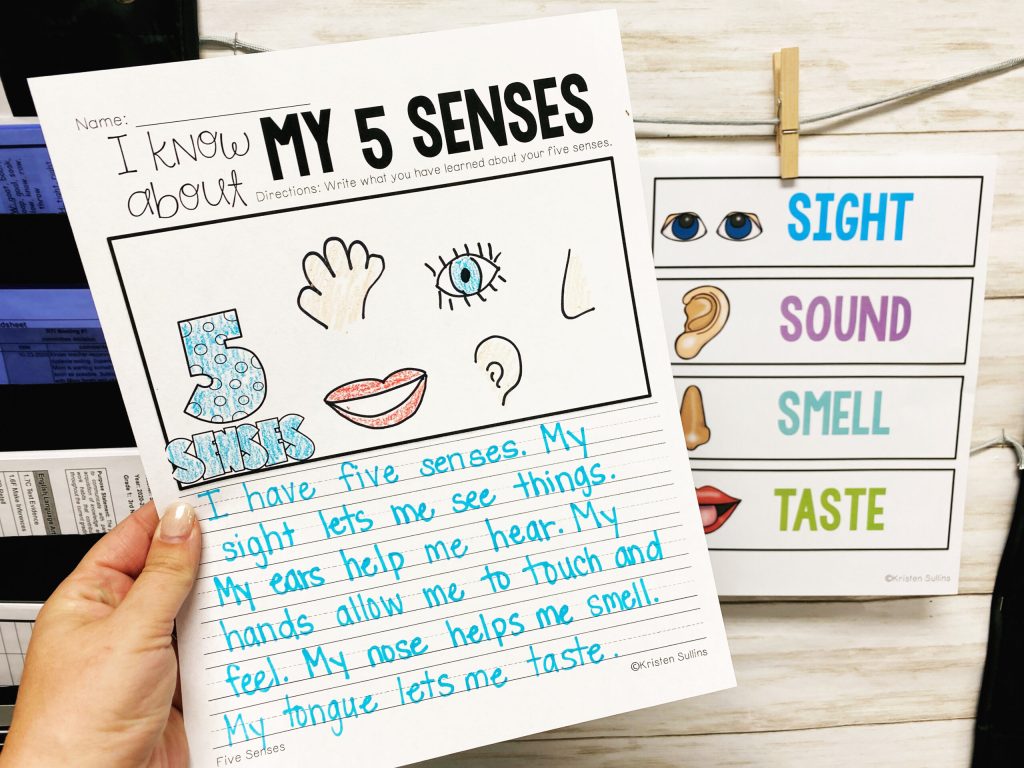
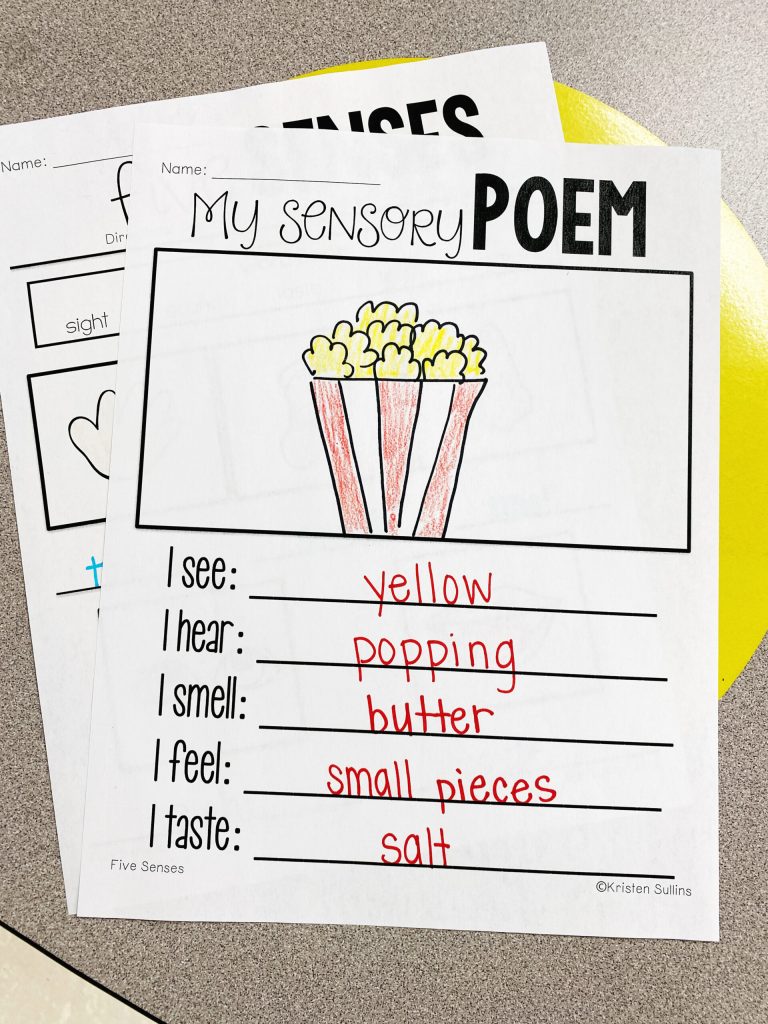
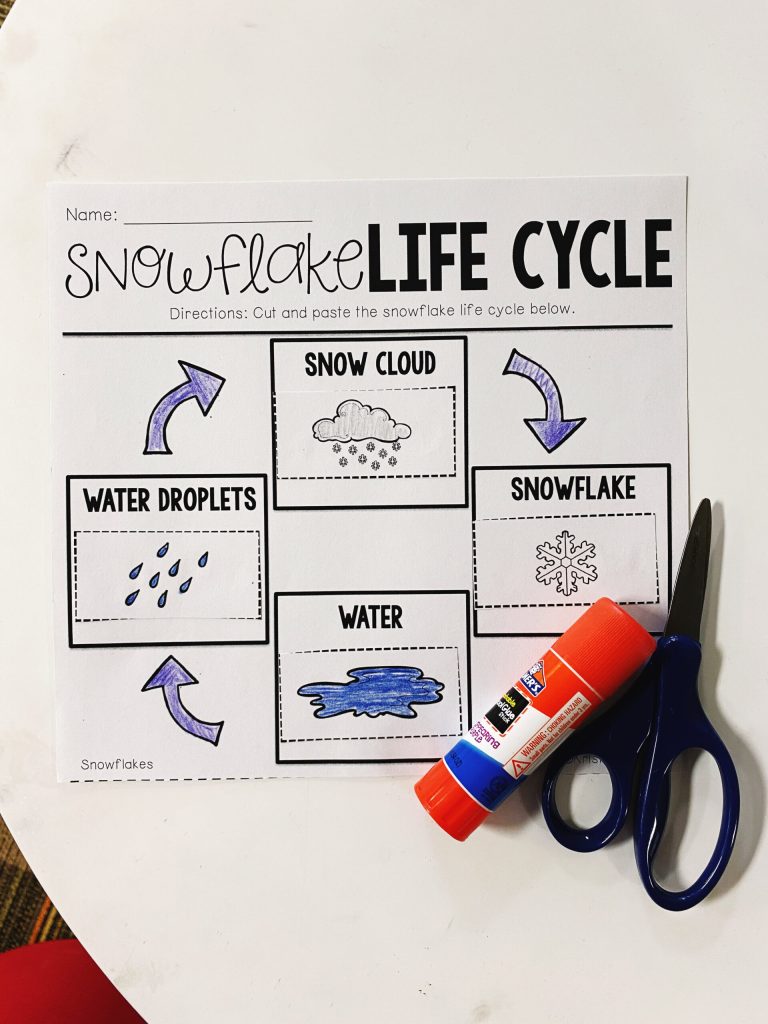
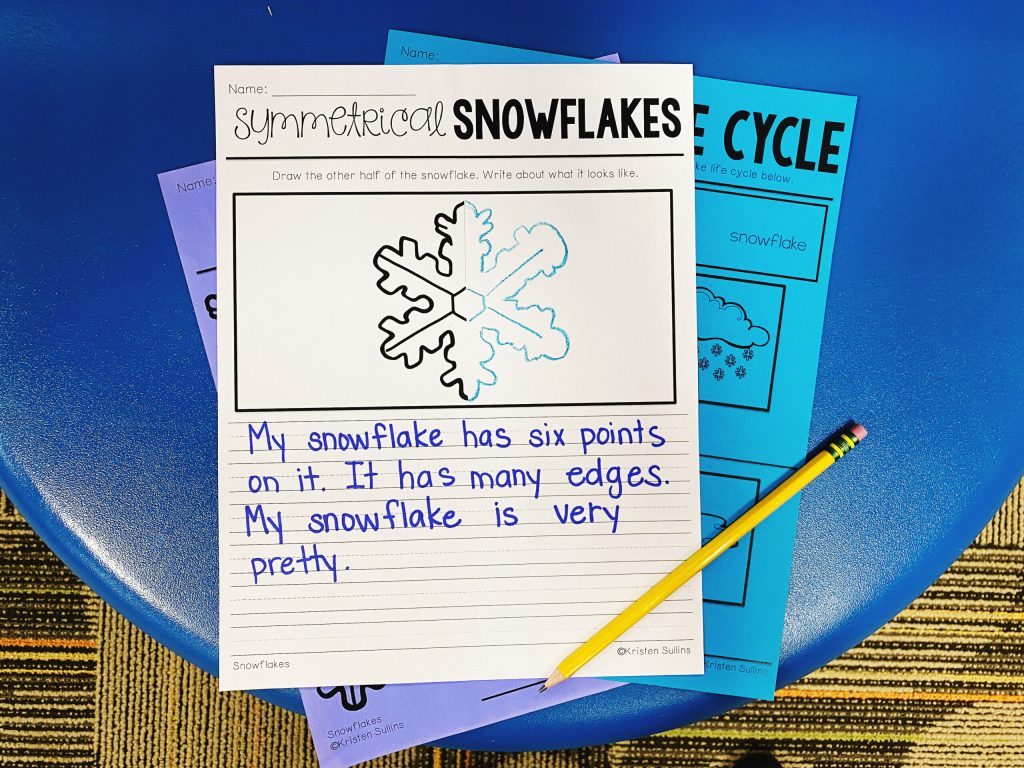
Snowflakes
When it's time for some more independent activities where students show what facts they have learned about snowflakes.
Cut and paste activities, like “Snowflake Life Cycle”, are perfect “end of the day” activities that first grade students can do on their own. It will give you as a teacher time to catch up on some one on one testing or help, or let's be honest, catch up on that stack of papers that have been sitting on your desk since last week.
If I want to save time… which is ALWAYS… I'll put these science themed activities in my writing station during guided reading time.
This works GREAT when it's a topic that we've already talked about as a class and something that the kids are really interested in.
Which makes this snowflake unit the PERFECT activities to use as independent writing station activities.
You can see three of my favorite snowflake independent activities to the right.
If you want to “beef up” any station activity, have students write about the topic on the back. You can have them write one sentence or you can require them to write four or five sentences using facts they have learned about snowflakes.
The same expectations can be set for the interactive journals that compare and contrast snow and sleet.




